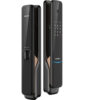More than three out of every four (76%) broadband service providers have either started to implement the Broadband Forum’s User Services Platform (USP) or plan to do so in the next year, according to a new report.
Respondents to a major new study into the future of the connected home commissioned by the Broadband Forum also predicted that a big increase in the number of smart home devices installed in homes would be a key driver for the continued growth of the connected device market over the next five years. The number of installed connected devices is expected to rise by a further 70% by 2025.
The report highlighted fragmentation in both customer premises equipment (CPE) and middleware as being the biggest barriers to the growth of the connected home. As smaller, innovative firms create technological improvements, such as Wi-Fi mesh, they need to ensure their products can easily integrate with others, and service providers need to avoid being locked in to single vendor solutions.
Broadband Forum’s Vice President of Strategic Marketing and Business Development Craig Thomas said: “As the demand for connected home services continues to proliferate, service providers are playing less of a central role in the consumers’ smart homes and have instead decided to partner or concentrate on enabling third parties to play their role within a managed service offering. This has led to the fragmentation which industry wide standards play a pivotal role in combating.”
“The survey report highlights the importance of USP in ensuring service and application providers can effectively manage devices and the Wi-Fi experience to seamlessly navigate the connected home environment. With the results of this global survey, we are delighted that so many service providers across the industry recognize the benefits in utilizing or planning to deploy USP in the near future,” Mr Thomas continued.
This free to download report is a follow up to the ‘Efficient and Automated Smart Home Rollout’ report produced in association with the Broadband Forum in 2015. As then, Omdia conducted a quantitative service provider survey of over 100 representatives across 19 countries, however, for this report Omdia also added in-depth qualitative interviews with key executives from 11 service providers in Latin America, North America, Europe and China. As well as information and data from this survey and interviews, Omdia has included data from its extensive research sets across the broadband, connected and smart home industries.
The report also revealed that 75% of all broadband subscriptions on a global basis will be on tariffs with speeds of more than 100Mbps by 2025. 16% will be on speeds of 1Gbps or more and the average global download speed of over 350Mbps by 2025 as more service providers actively invest in the home network and shift their attention to addressing consumer dissatisfaction surrounding home Wi-Fi related issues. 64% of respondents advised that slow broadband speed is the most common cause of user support calls, followed by Wi-Fi device configuration/setup (40%) and broadband latency/jitter (38%).
The report highlighted that the leading problems encountered with customer’s Wi-Fi was low coverage/range, latency/jitter and slow speed and service providers’ first instinct was to provide Wi-Fi extenders to solve the problem. However, not all Wi-Fi issues can be resolved by taking this action and it can be a wasted investment for those suffering from congestion or device connectivity issues. Smart Wi-Fi is on the rise and 63% of respondents to Omdia’s Service Provider Connected Home survey expect smart Wi-Fi’s penetration in their networks to be 25% or above within three years. At Broadband World Forum last year, Broadband Forum’s Cloud CO virtual demonstration highlighted how its specifications are enabling closed loop automation of Wi-Fi in multi-vendor environments.
“The connected home has become an essential part of the broadband network and with the continued growth of connected devices and variety of applications being run, it is essential that broadband service providers have access to a high-quality and reliable network,” said Omdia’s Research Director, Service Provider Consumer Michael Philpott. “Industry standards such as Broadband Forum’s USP and open frameworks are vital to this success in order to fully equip broadband service providers to dynamically compete with global tech and consumer electronics companies.”
The evolution of the popular TR-069 (CWMP) system, USP is the standardized, interoperable platform that uses the best of open source and standards and enables faster, more efficient, and reliable monitoring, controlling, and management of the multitude of connected devices and subscriber Wi-Fi in real-time. The report also highlighted that broadband service providers seek to see continued standards work maintain customer trust, eradicate fragmentation and facilitate the development of open platforms to fully drive third party developer scale.



















































































































